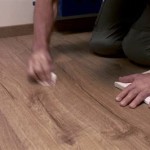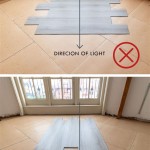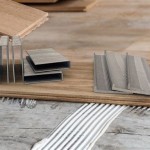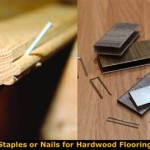Wooden Flooring Cost Per Square Foot: A Comprehensive Guide
Wooden flooring remains a popular choice for homeowners seeking a blend of aesthetics, durability, and warmth. However, understanding the cost implications associated with this flooring option is crucial for effective budgeting and informed decision-making. The price of wooden flooring is generally quoted per square foot, and this cost can vary significantly depending on several factors.
This article aims to provide a detailed overview of the various elements that influence the cost per square foot of wooden flooring, encompassing both material expenses and installation charges. We will delve into the different types of wood available, their respective pricing tiers, and the labor considerations that contribute to the overall financial investment.
Factors Influencing Wooden Flooring Material Costs
The primary determinant of wooden flooring cost per square foot is the type of wood selected. Hardwood and softwood options present distinct price ranges, further stratified by species, grade, and construction method.
Hardwood Flooring: Hardwood flooring, known for its durability and longevity, is typically derived from deciduous trees. Popular hardwood species include oak, maple, cherry, walnut, and hickory. Oak, particularly red and white oak, is often the most readily available and, therefore, one of the more affordable hardwood options. Maple provides a lighter, more consistent grain pattern and tends to be priced slightly higher than oak. Cherry and walnut, prized for their rich color and distinctive grain patterns, typically command a premium price due to their relative scarcity and aesthetic appeal. Hickory, known for its exceptional hardness and durability, falls within a similar price range to cherry and walnut.
The grade of hardwood also impacts the cost. Grades are typically categorized as select, common, and character grade. Select grade hardwood exhibits minimal knots and imperfections, resulting in a cleaner, more uniform appearance. Common grade hardwood contains more visible knots and color variations, offering a more rustic aesthetic at a lower price point. Character grade hardwood showcases significant natural characteristics, such as large knots, mineral streaks, and significant color differences, representing the most cost-effective option within the hardwood spectrum.
Furthermore, the construction method of the hardwood flooring influences the cost per square foot. Solid hardwood flooring, consisting of a single piece of wood, is generally more expensive than engineered hardwood. Engineered hardwood comprises a thin layer of hardwood veneer bonded to a core of plywood or high-density fiberboard (HDF). Engineered hardwood offers greater dimensional stability, particularly in environments with fluctuating humidity levels, and is often a more budget-friendly alternative to solid hardwood.
Softwood Flooring: Softwood flooring, primarily sourced from coniferous trees such as pine, fir, and cedar, offers a more economical alternative to hardwood. Pine is the most common and readily available softwood flooring option, characterized by its distinctive knots and warm, inviting appearance. Fir and cedar, while less common as flooring, can provide unique aesthetic qualities and are often used in more specialized applications. Softwood flooring is generally less durable than hardwood and more susceptible to scratches and dents. Therefore, it is often installed in areas with lower foot traffic.
The cost per square foot of softwood flooring is significantly lower than that of hardwood. However, its lower durability may necessitate more frequent refinishing or replacement, potentially offsetting the initial cost savings in the long run.
Other factors influencing material costs include the finish applied to the wood. Pre-finished wooden flooring, which is finished at the factory, generally carries a higher price tag than unfinished flooring, which requires on-site finishing after installation. Pre-finished flooring offers greater convenience and consistent finish quality, while unfinished flooring allows for custom staining and finishing options.
Labor and Installation Expenses
Beyond the cost of the flooring materials themselves, labor and installation expenses represent a significant portion of the overall project budget. These costs can fluctuate considerably based on the complexity of the installation, the condition of the subfloor, and the contractor's rates.
Preparation and Subfloor: The condition of the subfloor plays a crucial role in determining the labor costs associated with wooden flooring installation. A level, clean, and dry subfloor is essential for a successful installation. If the existing subfloor is uneven, damaged, or contaminated, additional preparation work may be required, such as applying self-leveling compound, repairing damaged sections, or installing a new subfloor altogether. These preparatory tasks will add to the overall labor costs.
Installation Method: The installation method employed also impacts the labor costs. Traditional nail-down or staple-down installations, typically used for solid hardwood flooring, require more time and skill than floating installations, commonly used for engineered hardwood and laminate flooring. Nail-down or staple-down installations involve securing the flooring directly to the subfloor using nails or staples, requiring precise alignment and spacing. Floating installations, on the other hand, involve interlocking the flooring planks together, creating a single, cohesive surface that rests on the subfloor without being directly attached to it. This method is typically faster and less labor-intensive.
Complexity of the Installation: The complexity of the installation area also contributes to labor costs. Areas with intricate patterns, curves, or numerous obstacles, such as stairs, doorways, and built-in cabinets, will require more time and skill to install properly. These areas often necessitate custom cuts and meticulous fitting, increasing the labor hours required.
Contractor's Rates: Finally, the contractor's rates will significantly influence the overall labor costs. Contractor rates vary depending on their experience, expertise, and geographic location. It is advisable to obtain multiple quotes from different contractors and carefully review their proposals to ensure that they include all necessary preparation work, installation services, and any associated fees.
Additional Costs to Consider
In addition to the material and installation costs, several other factors can contribute to the overall expense of wooden flooring projects. These include the removal and disposal of existing flooring, underlayment, trim and molding, and potential furniture moving charges.
Removal and Disposal: Removing and disposing of existing flooring can incur significant costs, particularly if the old flooring is difficult to remove or requires special disposal methods due to hazardous materials such as asbestos. The cost of removal and disposal will vary depending on the type of flooring being removed, the size of the area, and local regulations.
Underlayment: Underlayment is a thin layer of material installed beneath the wooden flooring to provide cushioning, sound insulation, and moisture protection. While not always required, underlayment can significantly improve the comfort and longevity of the flooring. The cost of underlayment will vary depending on the type and thickness of the material selected.
Trim and Molding: Trim and molding are used to conceal gaps between the flooring and the walls, doorways, and other architectural features. Trim and molding can add a finishing touch to the flooring installation. The cost of trim and molding will depend on the material, style, and quantity required.
Furniture Moving: Moving furniture out of the installation area can be a time-consuming and physically demanding task. If homeowners are unable to move the furniture themselves, they may need to hire professional movers, which will add to the overall project costs. The cost of furniture moving will depend on the quantity and size of the furniture, the distance it needs to be moved, and the mover's rates.

Hardwood Flooring Cost 2024 Per Square Foot Mk

The Complete Guide To Flooring Costs By Type Twenty Oak

How Much Does Hardwood Flooring Cost 2025

The Cost Of Installing Hardwood Floors A Guide For Homeowners Architects Diary

What Would Be The Average Cost Of Solid Wood Flooring In A Home Bvg

How Much Does Flooring Installation Cost 2025

Cost To Install Hardwood Floors The Home Depot

How Much Does Flooring Installation Cost 2025

What Is The Cost Of Flooring Per Square Foot With Materials

Cost Of Laying Engineered Wood Flooring With Diffe Patterns Major
Related Posts








